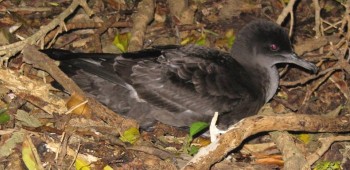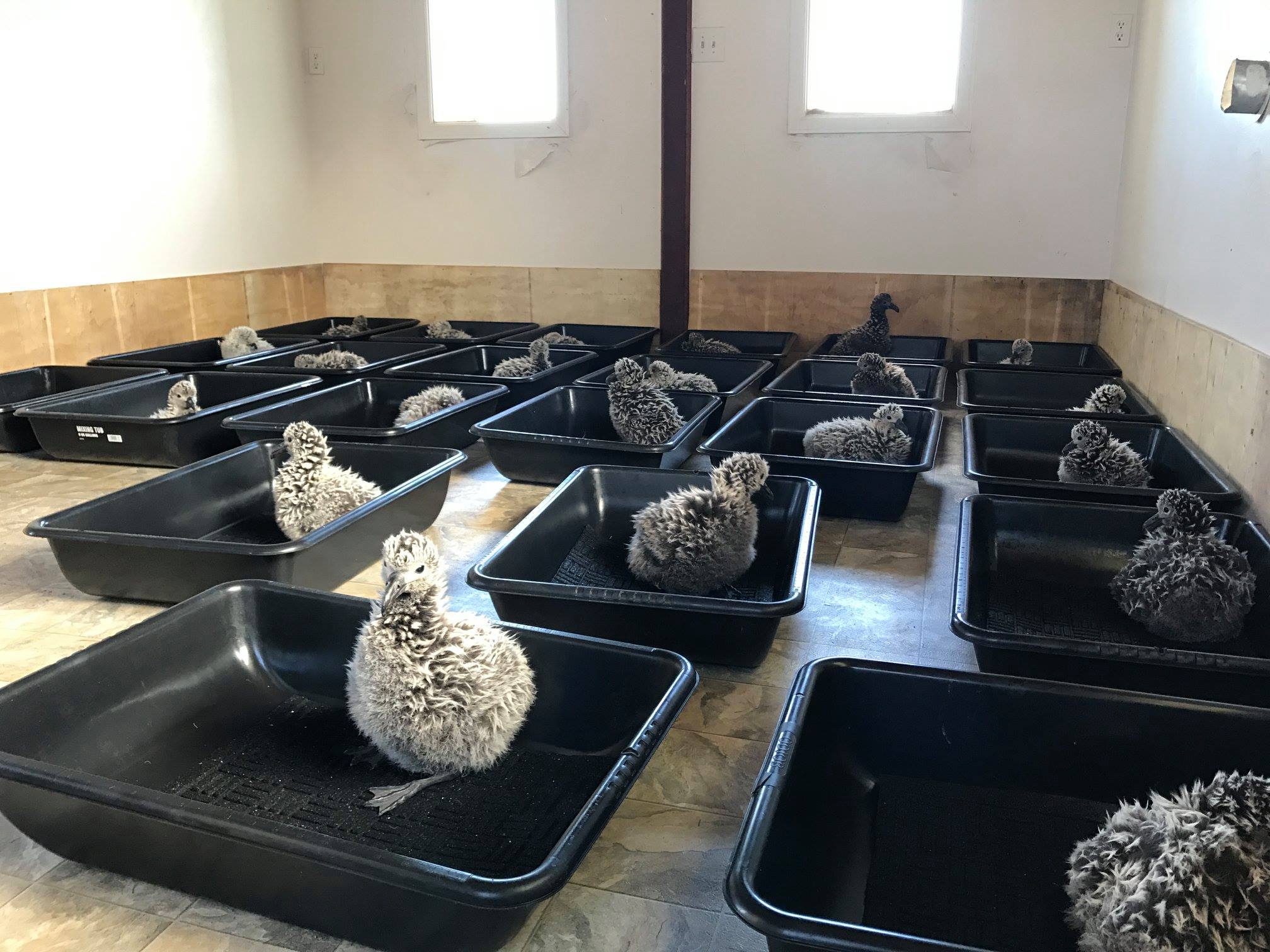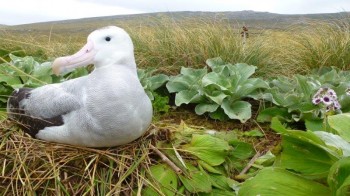Caitlin Kroeger (Department of Ocean Sciences, Long Marine Lab, University of California, Santa Cruz, California, USA) has been awarded a PhD for her thesis on sympatric breeding Campbell Thalassarche impavida and Grey-headed Albatrosses T. chrysostoma during incubation and early-chick-rearing stages on New Zealand’s Campbell Island.
The abstract of her thesis follows:
“The modulation of energy balance through physiological or behavioral adjustments (i.e., allostasis) allows organisms to cope with unexpected challenges, ensuring reproductive success and survival. However, energetic challenges can be exacerbated during critical life stages such as breeding, when more resources are needed to feed offspring. Amphibious marine organisms like seabirds already face a unique challenge of finding patchily distributed ephemeral prey within a vast, dynamic ocean and delivering prey to hungry chicks at land-based nests. With the depletion of ozone and rising sea temperatures, atmospheric and oceanographic disruptions are escalating, affecting the distribution of prey in addition to altering windscapes that seabirds, like the glider-shaped albatrosses, rely on for traveling. Metabolic stress hormones in seabirds can be used to indicate adverse changes within the environment; however, the functional role of stress hormones is confounded by factors such as species, life history, or breeding stage. In chapter 2, I used structural equation models to improve our understanding of the role of corticosterone, a stress hormone, as a mediator of energy balance in two sympatric breeding albatrosses during incubation and early-chick-rearing stages. Campbell (Thalassarche impavida) and grey-headed albatrosses (T. chrysostoma) are annual and biennial breeders, respectively, that occupy differing prey niches. By measuring foraging behavior, mass change, and hormone levels, I found that corticosterone concentrations before and after foraging trips were similar between species and across stages, potentially because of behavioral flexibility or different corticosterone functional roles across stages. However, when parents were provisioning small chicks during the guard stage, the former were more sensitive to changes in energy balance, suggesting that hormone concentrations elicited during this stage are indicative of foraging conditions. Also, pre-trip corticosterone may determine foraging destination in incubation-stage Campbell albatrosses, but it remains unclear if this mediates foraging success. In chapter 3, I examined the role of environmental interactions, behavioral flexibility, and morphological constraints on energy balance during early chick-rearing using the doubly labelled water method to estimate the daily energy expenditure (DEE) of GPS tracked individuals. In both species, greater DEE was associated with greater foraging success, lower mean wind speeds during water take-offs, a greater proportion of strong tailwinds (> 12 ms-1), and younger chick age. Greater foraging success was marginally costlier in male albatrosses of both species and DEE was higher in grey-headed albatrosses when they experienced a greater proportion of strong headwinds. Climate models predict wind speeds will weaken in the foraging range of female Campbell albatrosses and intensify in the range of grey-headed and male Campbell albatrosses, thus breeding costs may increase for both species. In chapter 4, I used a flight cost function to show that mean flight costs were greater during the incubation stage for grey-headed albatrosses, which may interrupt breeding cycles. I then used reanalyzed wind data in combination with bird-borne GPS tracking data to score the cost of flight path trajectory choices and to calculate vector correlation coefficients to evaluate wind-use consistency. Greater wind-use consistency resulted in lower mean flight costs and greater foraging success for both species, but Campbell albatrosses that use low-wind regions had the greatest wind-use consistency. Males of both species gained less mass than females when making similar cost choices during incubation stage transit. Chick-rearing individuals of both species traded greater cost choices for greater foraging success during outbound transit. Overall, foraging strategy, mediated by hormones and morphology, revealed energetic vulnerabilities with respect to species, sex, and breeding stage.”
Note that thesis is “is under embargo until March 20, 2020”. Access more of Caitlin’s research here.

A Campbell (right) and a Grey-headed Albatross interact on Campbell Island
Reference:
Kroeger, C.E. 2019. Stress hormones, foraging energetics, and wind-use patterns in two sympatrically breeding southern albatrosses. PhD thesis. University of California Santa Cruz.
John Cooper, ACAP Information Officer, 01 November 2019


 English
English  Français
Français  Español
Español 



